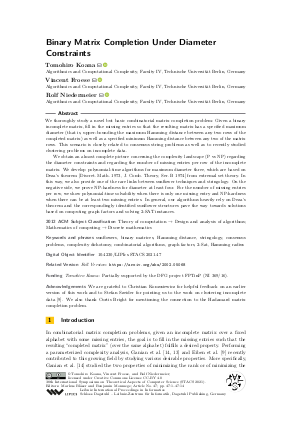LIPIcs.STACS.2021.47.pdf
- Filesize: 0.78 MB
- 14 pages

 Creative Commons Attribution 4.0 International license
Creative Commons Attribution 4.0 International license
























Feedback for Dagstuhl Publishing